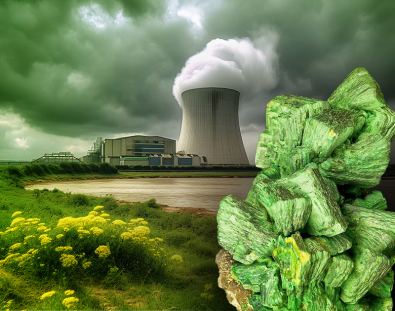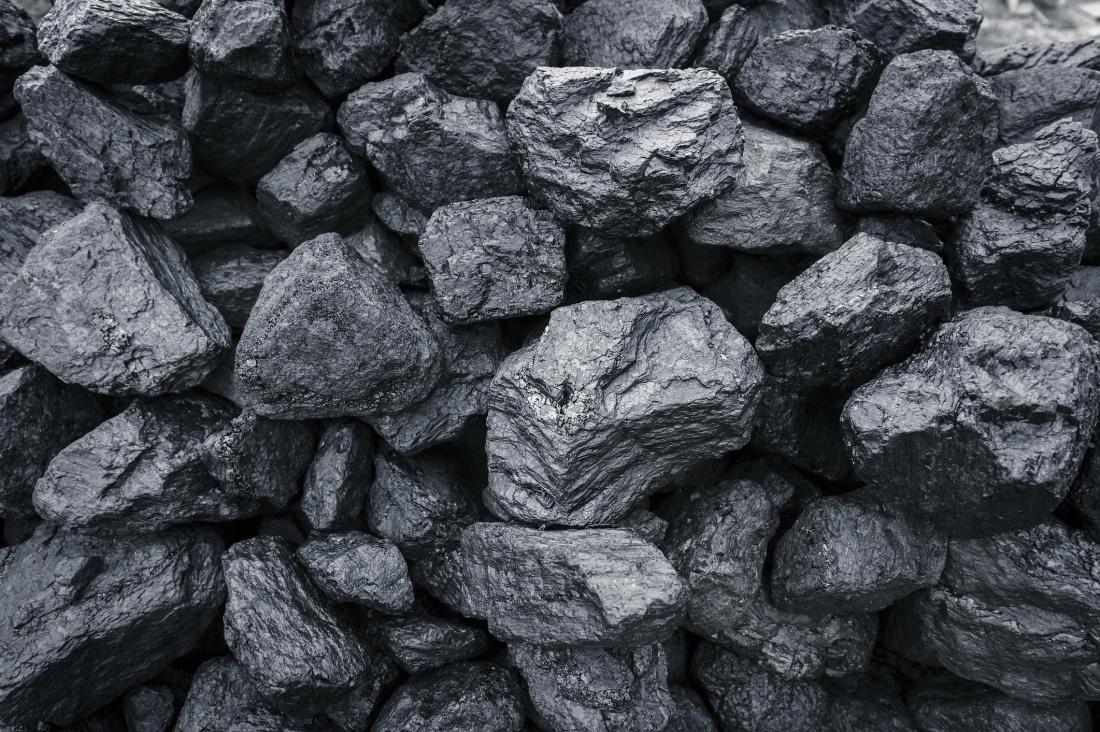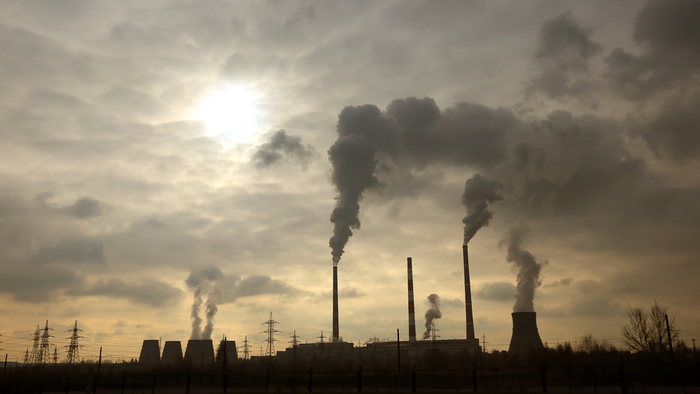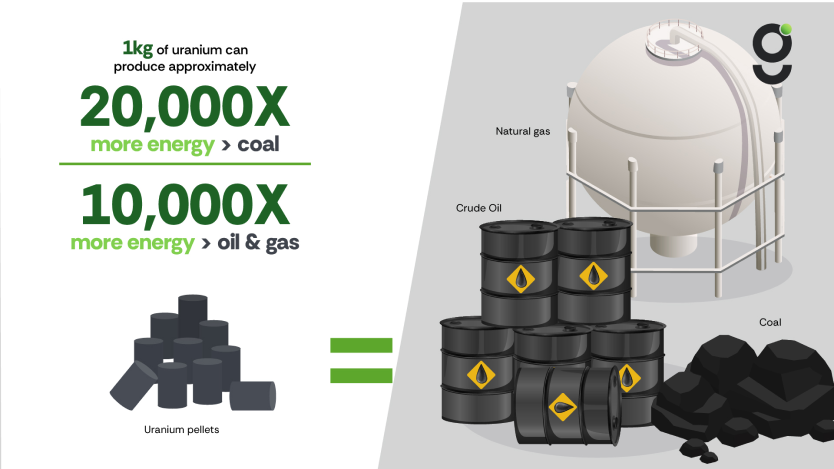Energy Efficiency Showdown
Uranium vs. Coal and Gas
Key Generation Uranium News Highlights

Generation Uranium Secures Key Mining Permits

Breakthrough Technology Enhances Uranium Purity

Global Energy Leaders Invest in Uranium
September 4, 2024
The world is in the midst of a transformative energy transition.
Traditional fossil fuels like coal and gas have powered industries and homes for over a century.
However, the environmental toll and finite nature of these resources have led to an urgent search for more sustainable alternatives.
Renewable energy sources such as solar, wind, and hydro have gained significant traction, but they face challenges in scalability and consistency.
Amidst this evolving landscape, nuclear energy, powered by uranium, emerges as a compelling solution.
Energy efficiency, which measures the output of usable energy relative to the input, is a critical factor in determining the viability of these energy sources.
In this article, we will delve into the energy efficiency showdown between uranium, coal, and gas to understand their roles in our present and future energy needs.

Uranium: The Power of Nuclear Energy
Uranium is a heavy metal that has been utilized for over half a century to generate nuclear power.
The process begins with uranium mining, followed by enrichment and fabrication into fuel rods used in nuclear reactors.
Nuclear reactors operate on the principle of nuclear fission, where the nucleus of a uranium atom splits into smaller parts, releasing a tremendous amount of energy.
This energy is harnessed to produce steam, which drives turbines to generate electricity.
Nuclear power plants are known for their remarkable efficiency.
A single uranium fuel pellet, roughly the size of a pencil eraser, produces as much energy as one ton of coal or 17,000 cubic feet of natural gas.
This high energy density makes nuclear power one of the most efficient and reliable energy sources available.
In terms of environmental impact, nuclear power is a double-edged sword.
On one hand, it produces minimal greenhouse gas emissions during operation, making it a clean energy source in terms of air pollution and climate change.
On the other hand, the mining and refining of uranium can be environmentally disruptive, and the long-term storage of radioactive waste poses significant challenges.
Nevertheless, advancements in technology are continuously improving the safety and efficiency of nuclear power, reinforcing uranium's potential as a cornerstone of sustainable energy production.
Coal: The Traditional Energy Giant
Coal has been a cornerstone of energy production since the Industrial Revolution.
It is abundant, relatively inexpensive, and has fueled economic growth and industrialization worldwide.
Coal power plants generate electricity by burning coal to produce steam, which drives turbines connected to generators.
Despite its historical significance, coal is one of the least efficient energy sources.
The average efficiency of a coal-fired power plant is around 33%, meaning only a third of the energy content of coal is converted into usable electricity.
The rest is lost as heat and other inefficiencies.
The environmental impact of coal is profound and multifaceted.

Coal mining, especially through methods like mountaintop removal and strip mining, can devastate landscapes and ecosystems.
The combustion of coal releases significant amounts of carbon dioxide, sulfur dioxide, nitrogen oxides, and particulate matter, contributing to air pollution, acid rain, and climate change.
Coal ash, a byproduct of coal combustion, contains toxic heavy metals and poses a disposal challenge.
Efforts to clean up coal, such as carbon capture and storage (CCS) and high-efficiency, low-emission (HELE) technologies, are being developed but face economic and technical hurdles.
Given these challenges, coal's future as a dominant energy source is increasingly questioned in the quest for cleaner and more efficient alternatives.
Gas: The Cleaner Fossil Fuel
Natural gas has emerged as a vital player in the global energy mix.
It is often hailed as the cleaner fossil fuel due to its lower carbon dioxide emissions compared to coal and oil.
Natural gas power plants operate by burning gas to produce steam, which drives turbines to generate electricity, similar to coal plants but with higher efficiency.
The efficiency of natural gas power plants can exceed 60%, particularly in combined cycle plants where waste heat is used to generate additional electricity.
This makes natural gas significantly more efficient than coal, providing more energy output for the same amount of fuel input.
However, the environmental impact of natural gas is not negligible.
The extraction process, especially hydraulic fracturing or fracking, can lead to groundwater contamination, increased seismic activity, and methane leaks.

Methane, a potent greenhouse gas, has a much higher short-term impact on global warming than carbon dioxide.
Despite these concerns, natural gas produces roughly half the carbon dioxide emission
s of coal when burned, contributing to its reputation as a transitional energy source.
As a bridge fuel, it offers a pathway towards lower emissions while renewable energy technologies continue to develop and scale.
The future of natural gas in the energy landscape depends on balancing its benefits against its environmental drawbacks and the ongoing shift towards more sustainable energy sources.
Comparative Analysis: Uranium vs. Coal and Gas

When evaluating energy sources, energy efficiency is a critical metric.
Uranium, used in nuclear power plants, boasts an impressive efficiency.
A single uranium fuel pellet produces as much energy as one ton of coal or 17,000 cubic feet of natural gas.
This high energy density translates into a significant output from a relatively small amount of fuel.
Coal, despite its historical role in powering industries, is less efficient.
The average efficiency of a coal-fired power plant is around 33%, with much of the energy lost as heat.
Moreover, the environmental impact of coal is severe, contributing to air pollution, greenhouse gas emissions, and hazardous waste.
Natural gas, often viewed as a cleaner alternative, achieves higher efficiencies, especially in combined cycle plants, where it can exceed 60%.
This higher efficiency means more electricity is generated from the same amount of fuel compared to coal.
However, natural gas extraction and combustion still pose environmental risks, including methane leaks and groundwater contamination.
When comparing environmental impacts, nuclear power stands out for its low operational emissions.
Nuclear plants produce minimal greenhouse gasses once operational, whereas coal and gas plants emit significant quantities of carbon dioxide and other pollutants.
However, the challenge of radioactive waste management in nuclear power cannot be ignored.Cost-effectiveness and sustainability are also crucial factors.
While the initial capital costs for nuclear power plants are high, their long operational lifespans and low fuel costs make them economically viable over time.
Coal and gas plants, on the other hand, face fluctuating fuel prices and potential regulatory costs related to emissions.
In the context of long-term sustainability, uranium emerges as a compelling choice.
Its high efficiency, low operational emissions, and potential for advancements in waste management position it as a key player in the future energy mix.
Investors seeking sustainable and efficient energy solutions should consider the advantages of uranium over traditional fossil fuels.
Future Prospects: Moving Towards a Greener Future
The global energy landscape is undergoing a significant transformation.
With increasing awareness of climate change and the urgent need to reduce carbon emissions, the focus is shifting towards cleaner and more sustainable energy sources.
Renewables like solar and wind are gaining momentum, but their intermittent nature and current technological limitations present challenges for consistent energy supply.
In this context, nuclear energy, powered by uranium, offers a promising solution.
The World Nuclear Association projects that nuclear power needs to triple by 2050 to meet the Paris Accord goals for global temperature reduction.
This underscores the critical role uranium will play in achieving a low-carbon future.
Advancements in nuclear technology are enhancing the safety, efficiency, and cost-effectiveness of nuclear power plants.
Innovations such as small modular reactors (SMRs) and next-generation reactors promise to make nuclear power more adaptable and safer.
These technologies also address some of the longstanding concerns about nuclear energy, such as waste management and operational safety.
Government policies and incentives are crucial in shaping the future energy mix.
Many countries are implementing policies to phase out coal and reduce reliance on fossil fuels, creating a favorable environment for nuclear energy investment.
Additionally, geopolitical stability in uranium-producing regions like Canada further strengthens the case for uranium.
Investing in uranium and nuclear energy aligns with global trends towards sustainability and decarbonization.
As the world moves towards a greener future, uranium's high efficiency, low operational emissions, and technological advancements position it as a cornerstone of sustainable energy production.
For investors, this represents a compelling opportunity to be part of the energy transition and contribute to a more sustainable world.
Conclusion: Why Uranium Stands Out
As we navigate the complexities of the global energy landscape, it becomes clear that efficiency and sustainability are paramount.
Uranium, utilized in nuclear power, emerges as a standout energy source for several compelling reasons.
First, the energy density of uranium is unparalleled.
A small amount of uranium fuel can produce vast amounts of energy, far surpassing the output of coal and natural gas.
This high efficiency translates into lower fuel consumption and reduced environmental impact.
Second, nuclear power generates minimal greenhouse gas emissions during operation.
Unlike coal and gas plants, which emit significant quantities of carbon dioxide and other pollutants, nuclear power plants offer a cleaner alternative that aligns with global efforts to combat climate change.
Third, advancements in nuclear technology are addressing historical concerns about safety and waste management.
Innovations such as small modular reactors and improved waste storage solutions are making nuclear power safer and more sustainable.
Furthermore, the long operational lifespan of nuclear plants and stable fuel costs make them economically viable in the long term.
While the initial capital investment is high, the benefits of sustained, low-cost energy production outweigh the upfront costs.
In the race towards a sustainable energy future, uranium stands out as a key player.
Its high efficiency, low emissions, and technological advancements position it as a superior choice over traditional fossil fuels.
For investors, uranium represents a compelling opportunity to support the transition to cleaner energy and achieve long-term returns.
Generation Uranium is at the forefront of this transition, offering a unique investment opportunity in a sector poised for growth.
Join us in generating the power of tomorrow.
Subscribe for the Latest Generation Uranium Investor Updates
Subscribe for the Latest on
Generation Uranium's Advancements
Office: 6th Floor,
905 W Pender St,
Vancouver, BC
V6C 1L6
Email: [email protected]

